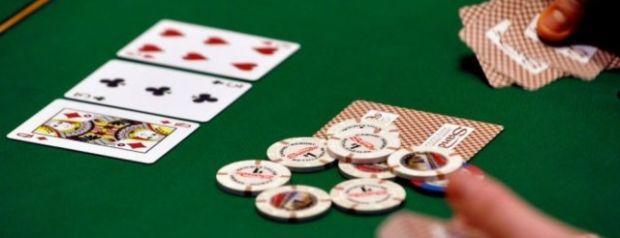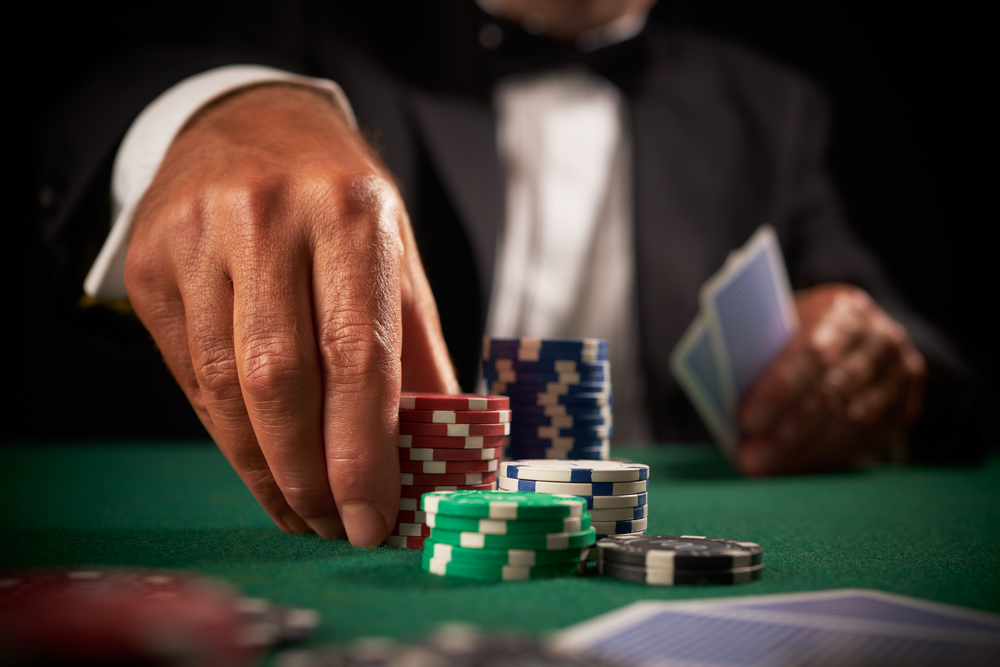Poker Strategy for a Very Wet Board
7 years ago

08 Sep
The JhTh8d board can be amazing when you're holding KhQh, a bane of your existence when you have AcTc and a real pickle when you flop a bottom set. Playing optimally on a wet board can be very tricky.
Everyone can fire a mindless cbet on an A72 rainbow but navigating through KhQhJd can seem as complicated as trying to defuse a time bomb (unless you have AhTh, in which case you're just waiting for the other player to cut the wrong wire). Wet boards require some special attention and ignoring that fact can result in some very costly mistakes.
Fastplay the Goods
The first important adjustment to our strategy when it comes to playing the wet boards optimally should be fast playing the top of our range. When you're holding 44 on an As4c9d after cold calling a raise preflop there's not much incentive for you to do anything other than calling against most players. Your average opponent will fire a bet with every Ax and a bunch of air combos that you don't want to scare away by raising the flop. Some players may even fold their Ax type hands against an aggressive action and there are no draws that you have to protect your hand against.
Change that board to 7s6s4d and raising or even leading the flop becomes a much more attractive proposition. Villain is less likely to cbet air and you're more likely to be on a receiving end of a bad beat if you don't charge an adequate amount from the many draws your opponent might be holding.
Betting for thin value is also much more attractive on wet boards than it is on dry ones. While holding KJ on an AdJs7c3c you're not really loving life and even against a somewhat loose-passive opponent it's hard to imagine that you can get more than one street of value. Change that board to AdJc8c6d and suddenly you can fire of two barrels in position against most recreational players. Just remember not to overplay your marginal value hands and fold to aggression when it makes sense.

Don't Bluff Without Equity
As a general rule bluffing on wet boards isn't that great of an idea because opponents are much more likely to connect on something like Jd9d7h than they are on let's say Kh8d4s. At the same time, wet boards will provide you with more semi-bluffing opportunities so bluffing without equity is simply not necessary.
This is obviously a general rule that can help you adjust your ranges to specific texture. You can't simply ignore the large chunk of combinations belonging to the bottom of your range but you can get away with using those hands far less often on a wet board since you flop some equity much more often.
The Price of Poker
If you're not careful you might find yourself routinely calling pot size turn and river bombs out of position with a marginal flush draw. In order to prevent that you have to become proficient and figuring out your immediate odds and outs as well as your implied odds. When it comes to the odds and outs you can use the good old fashioned rule of 2 and 4 to figure out approximately how much equity do you have with your draw. Nine out flush draw will have roughly 36-38% equity on the flop (9 outs times 4 equals 36) and around 18-20% on the turn (9x2=18%). Compare that to the odds your opponent is giving you and you'll know if you have the immediate odds to continue with your draw. Here's a helpful list of the equity you need to call in certain spots based on betsizing:
- vs. 2x pot size bet - 40%
- vs. 1x pot size bet - 33%
- vs. 3/4 pot size bet - 30%
- vs. 1/2 pot size bet - 25%
- vs. 1/3 pot size bet - 20%

Figuring out your implied odds is much more difficult. Should you continue with 9s8s on an AsJs3d5d board against a 3/4 pot size bet from a tight opponent? What about the loose opponent? How much your position should affect your decision? While it's impossible to calculate your exact implied odds here are some guidelines on how to estimate them based on a few different factors:
- Position. It's much easier to realize your implied odds when calling the turn in position than out of position. When calling out of position you're relying on your opponent to build the pot on the river (unless you're willing to lead when you hit your draw which will often be very transparent).
- Playing against a loose or aggressive opponent is good for your implied odds since it's far more likely that your draw will get paid off when you hit.
- The perceived hand strength of your opponent is also very important. If the villain is bombing an AsKsQd8c board without fear you can be reasonably sure that he or she has a very strong hand that you can get some value from once you hit your draw.
- Stack to pot ratio. This is pretty self-explanatory, the deeper the stack the higher the potential payday.
- Lastly, it's much easier to realize your implied odds with a disguised straight draw than it is with an obvious flush draw. Something like QT on an AJ97 is much harder to account for than QJ on T98 or AsKs on QsJs7h8s.







Comments
You need to be logged in to post a new comment